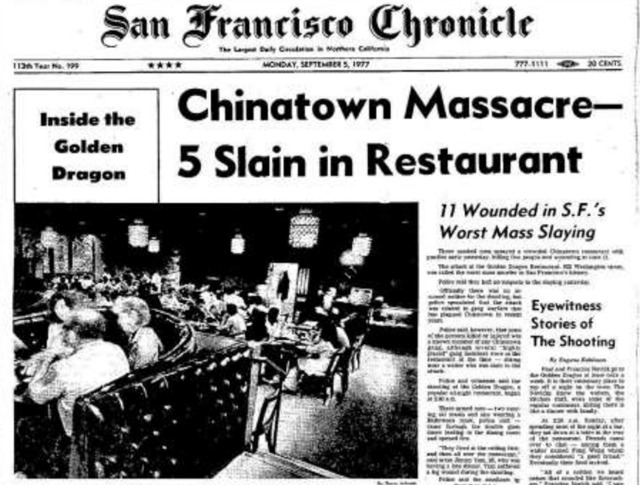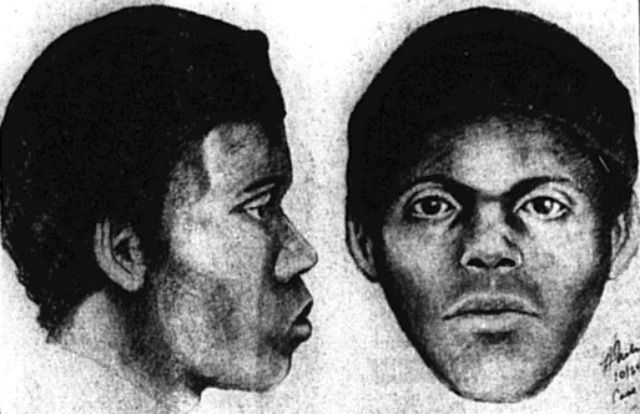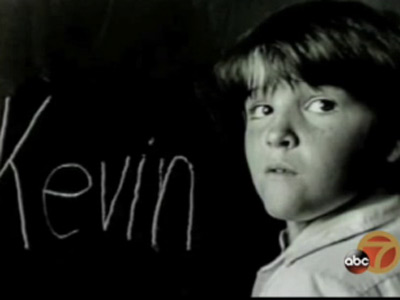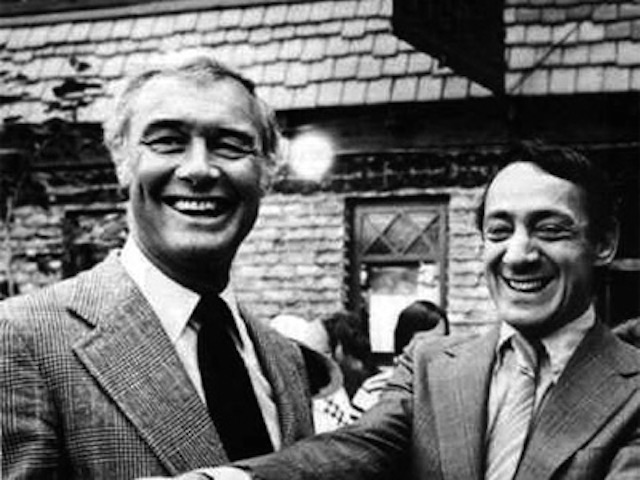Though San Francisco has a long way to go before becoming a crime-free utopia, the city's 21st-century murder rate is pretty low compared to the homicide numbers we saw in the years beginning with 19. In 1993, for example, we saw 123 slayings, which is about double what SF has experienced in recent years. The 20th century was also when SF had many of its most notorious murders, the 10 grisliest of which we list below. Did we miss one that is especially close to your heart? Please do let us know in the comments, so we can forward your identifying details to the relevant authorities for an appropriate investigation of your whereabouts on the dates in question.
Mass Shooting At 101 California Street
The deadliest mass shooting in San Francisco history happened seemingly at random one July afternoon by an unhinged man whose motives appear to have been muddied by mental illness. On July 1, 1993, 55-year-old Gian Luigi Ferri walked into the law offices of Pettit & Martin on the 34th floor of 101 California Street, put on a pair of orange ear protectors, and began shooting at random with three semi-automatic pistols. Ferri had not had any contact with the firm since 1982, at which point they had advised him with several land deals in Kentucky and Indiana, as the New York Times reported the following day. Ferri had been living in Los Angeles and had recently tried to file for bankruptcy there, claiming he had been screwed over in a recent deal in Colorado. His reason for seeking revenge against Pettit & Martin was never understood he had in fact gotten a million-dollar judgement in his favor in relation to one of the deals they advised him on but he left behind a mostly unintelligible, all-caps, type-written letter in which he railed against the Food and Drug Administration and the the legal profession in general, with their "allegiance to the monarchy," and included a list of over 30 "criminals, rapists, racketeeres [sic], lobbyists," none of whom worked at Pettit & Martin. After killing eight people and injuring six others, moving from the 34th floor down to the 33rd, which was also partially occupied by the firm, Ferri took his own life. The shooting, along with some other high-profile incidents of violent crime that year including the siege in Waco, Texas, led directly to Congress enacting the Violent Crime Control and Law Enforcement Act of 1994, which included an assault weapons ban that expired, via a sunset clause, in 2004, and has been followed by no similar ban. Jay Barmann

The Unsolved Murder of SFPD Chief William Biggy
Last seen near Alcatraz on the foggy night of November 30, 1908, San Francisco’s short-lived police chief William J. Biggy was appointed to the job just a year before his death in a tumultuous time for a city wracked by corruption and scandal. The SF Museum recalls that Biggy’s predecessor, Chief Jeremiah Dinan, was forced to resign the job during the famous Abraham Ruef graft trials at the time: As rumor had it, Dinan was on the take from Ruef, and Biggy, then an Officer of the Court, went so far as to guard the crime boss at the St. Francis Hotel because Dinan’s jails couldn’t be trusted. Dinan later perjured himself and resigned, and Biggy took over as chief, a move he would barely live to regret. In 1908, a Ruef stooge named Morris Haas was on trial when he shot a prosecutor in an open court. Did I mention the tumult in San Francisco at the time? Haas was later found dead in his cell, shot in the head, and newspapers aired suspicions that Biggy did the deed to shut Haas up. The chief denied those rumors vociferously, and aiming to clear his name and solve the case, he crossed the Bay on a police boat to talk to Police Commissioner Hugo Keil. Biggy talked with the commissioner about the Haas case until late in the evening and set out back across the Bay with just one other officer, one William Murphy, at the helm of the police boat. When Murphy docked in San Francisco, Biggy was nowhere to be found — Murphy told the authorities he last saw Biggy onboard as they passed Alcatraz. Biggy wasn't found until a month later... when his body was discovered floating near Angel Island. Whatever Biggy learned from the commissioner that night, he took to his watery grave, and the circumstances of his death were never explained. —Caleb Pershan

The Golden Dragon Massacre
You've likely walked past the Imperial Palace restaurant at 822 Washington Street a number of times, unaware that it was the site of San Francisco's "worst mass murder," per the Chron's front page account of the events on September 4, 1977. Members of Chinatown gang the Joe Boys raided what was then the Golden Dragon restaurant in an effort to assassinate the leader of Wah Ching, a rival gang. But when the Joe Boys showed up, their target hit the floor as "The shooters sprayed the restaurant with fire from shotguns and semi-automatic weapons, killing five innocent bystanders and wounding 11 more in the fusillade," Kevin J. Mullen writes. The slayings spurred the SFPD to create their famous "Chinatown Squad" to root out gang activity in that neighborhood, leading to the capture and conviction of the gunmen and the eventual disbanding of the Joe Boys. — Eve Batey

SFPD sketch of The Doodler
The Doodler Murders
As many as 14 men are believed to have been killed by The Doodler, so named because he was known to sketch his victims before stabbing them to death. He stalked the Castro and other areas known for their concentration of gay men from January 1974 to September 1975, picking up guys, having sex with them, then killing them. His victims were found in places as varied as Ocean Beach, Spreckels Lake, and the Lincoln Park golf course. Though police say they had a suspect in their grasp, the case against the never-named alleged serial killer stalled after three of the Doodler victims who'd survived his attacks refused to testify against him in court, as to do so would "out" themselves in a world that was still slow to accept gay man. According to The Awl, one of those surviving victims was "an entertainer of some kind who, according to police, was 'nationally known.'" To this day, crime watchers speculate that that man was Rock Hudson or Richard Chamberlain, but that detail has never been definitively confirmed. — Eve Batey

The Disappearance of Kevin Collins
On the evening of February 10, 1984, 10-year-old Kevin Collins was on his way home from basketball practice at St. Agnes School in the Haight-Ashbury district when he would disappear without a trace likely the victim, investigators believe, of a sexual predator. Collins was last seen wearing an SF Giants jacket sitting on a bus stop bench at Masonic and Oak around 7:55 p.m., waiting for the 43 bus back to his parents' home on Sutter Street in the Western Addition. Witnesses reported seeing him speaking to a man with a black dog, a person of interest who police concluded in 2013 was likely a man named Dan Leonard Therrien, a convicted pedophile who lived just a couple of blocks away from the bus stop at Page and Masonic at the time of Collins' disappearance, and who owned a black dog. Thierren used multiple aliases including Wayne Jackson and Kelly Sean Stewart, and was arrested in 1981 for lewd acts on a 7-year-old boy near Fisherman's Wharf, serving six months in jail for the crime and three years probation. He was initially questioned in Collins's disappearance, and his apartment was searched, but he was released after witnesses failed to identify him in a lineup. Therrien died in 2008, last known to be living on Moraga Street in the Sunset. Investigators in 2013 excavated part of the basement of the building where Therrien lived but found only some animal bones, likely those of a dog. Collins's disappearance was one of the first in a series of high-profile missing child cases to make national headlines, and he was one of the first young faces to appear on the back of a milk carton. Though no body has ever been found, Collins is presumed dead, though if he were somehow alive and suffering amnesia or was in some kind of Jaycee Lee Dugard captivity situation, he would be 43 years old now. The case remains open, and whenever bones turn up in the general vicinity of the Haight, Collins's unsolved case comes up in many minds again, like when these child's bones were discovered in 2015 in a planter box at McAllister and Steiner Streets. Jay Barmann
The Assassinations of George Moscone and Harvey Milk
On November 27, 1978 at City Hall, former SF Supervisor Dan White assassinated Supervisor Harvey Milk and Mayor George Moscone, acting under the influences of extreme depression, misunderstood pressure from conservative departments and constituents, and yes, some junk food. White was infamously convicted of manslaughter rather than murder after mounting what's become popularly known as the "Twinkie Defense." But really, sugary foods were hardly mentioned at trial, and the name brand not at all. White's lawyers actually argued for something called "diminished capacity," pointing to his mental state generally. A Vietnam veteran and fire department golden boy, White's name first appeared in the news when he saved a woman and her baby on the job. Eventually he was elected supervisor of a district described by The New York Times as "a largely white, middle-class section that is hostile to the growing homosexual community of San Francisco." Though he was initially Milk's friend and even confidante despite their political differences, the two soon clashed, and White resigned his Board seat. That was a mistake his supporters, many of them manipulative, wouldn't let him forget. They lobbied him fiercely to reinstate himself as Supervisor. To that, Moscone originally agreed, but then reversed himself. Completely disgruntled and with the intention of killing not just Moscone and Milk but also then California Assembly Speaker Willie Brown and Supervisor Carol Ruth Silver, White entered City Hall through a window and carrying a revolver. When White confronted Moscone in his office to ask again for re-instatement to the Board of Supes, he was refused and shot the mayor. He then walked to the other side of the building to kill Milk. Dianne Feinstein, who would deliver the news on TV and succeed Moscone as mayor, was the first to find the Supervisor's body. White confessed quickly, but instead of being found guilty in a cut-and-dry case of premeditated murder, he was sentenced to seven years for voluntary manslaughter, a punishment so deplored it sparked the city's White Night Riots. He served five years of the sentence before going free, and though Mayor Feinstein publicly warned him not to, White returned to his family in San Francisco in the mid-80s. He committed suicide less than two years later. — Caleb Pershan
Park Station Bombing
Sergeant Brian V. McDonnell was fatally injured when a pipe bomb was placed on a window ledge at SFPD's Park Station on February 16, 1970. Nine other officers were injured in the attack, including Officer Robert Fife, who told the Chron in 2007 that "Just a matter of inches and I (would have died) with Brian McDonnell. ... It was carnage. It was the worst thing I had seen in my life. And it was just a matter of inches and seconds." Grand Jury investigations into the attack, of which there have been many, have implicated radical left-wing organization the Weather Underground, but even after being accused of the crime on 2009 by San Francisco's police union, WOA founder Bill Ayres continues to deny involvement in the case. It remains unsolved to this day. — Eve Batey

The Trailside Killer, then and now.
The Trailside Killer
SF native David Joseph Carpenter got his start torturing animals and, at age 13, molesting two of his cousins, a crime for which he was incarcerated. Rather than get scared straight, he was arrested again in 1970 for attempting to kidnap a woman in SF, and was a prime suspect in the Zodiac killings, until evidence cleared his name in that case. And he was arguably more prolific than the Zodiac, as between 1979-1981 he lived with his parents in Glen Park as he raped and murdered as many as ten people on the trails in Marin, Santa Cruz, and San Francisco counties. Though he was convicted of five counts of first degree murder in 1984, the cases have continued to roll in. In 2010, DNA evidence linked him to the 1979 "butchery" of Mary Frances Bennett, an Outer Sunset resident found dead near the Legion of Honor with 25 stab wounds. Carpenter, whose three children are rumored to still live in SF, remains on death row in San Quentin. — Eve Batey
The Zebra Killings
Just one of several terrifying and dark chapters in San Francisco of the 1970s, the so-called Zebra Killings that occurred between October 1973 and April 1974 were entirely random, racially motivated murders that had the city on edge for six straight months and just several years after the similarly terrifying Zodiac killer had gripped the Bay Area in terror. SFist earlier recounted the salient details of the spree of slayings that took 14 lives and injured eight others, mostly occurring at night and along the Divisadero corridor. The first attack happened on the night of October 19, 1973, and the victims were Richard and Quita Hague, a married couple aged 30 and 28 respectively. They were taking an evening walk near Coit Tower when they were forced into a white van, where Quita was sexually assaulted and then nearly decapitated with a machete. Richard was attacked with the machete, but lived to tell the story, and the Zebra Killers would go on to commit 13 more execution-style killings, mostly by firearms at close range and their victims included Art Agnos, who survived the ordeal and later became mayor. It would later come out that the killers were especially on the hunt for white children, because making victims of them was the quickest way to becoming a Death Angel, part of a militant Black Muslim cult, of sorts. Police would ultimately arrest four men in the killings, Larry Green, J.C.X. Simon, Manuel Moore and Jessie Lee Cooks, who were all convicted of first-degree murder and conspiracy to commit first-degree murder. Simon was found dead in his jail cell at San Quentin in 2015 at the age of 69. Jay Barmann

The Zodiac Killer
During a murderous rampage that ranged from Lake Beryessa to San Francisco's 7-by-7, "The Zodiac Killer" or "Zodiac" frequently contacted local Bay Area media outlets in order to take gloating, taunting credit for deaths, leaving cryptic clues as to his identity, which was never deciphered. Some of those deaths can't be tied to Zodiac — he claimed 37, but investigators only positively connect him to seven of those. The first was the 1968 shooting of two high schoolers parked in a car on Lake Herman Road near Benicia, a "lover's lane," and the last was in 1969 in Presidio Heights. Zodiac's cryptogram letters, published in the Chronicle, the Examiner, and elsewhere, brought him notoriety: Those were deciphered to read, horrifyingly, such statements as "I LIKE KILLING PEOPLE BECAUSE IT IS SO MUCH FUN IT IS MORE FUN THAN KILLING WILD GAME IN THE FORREST BECAUSE MAN IS THE MOST DANGEROUE ANAMAL." Zodiac's murder spree has been the subject of several books and films, perhaps most notably the 2007 David Fincher procedural Zodiac starring Jake Gyllenhall, Mark Ruffalo, and Robert Downey Jr. In 2016, the identity of the Zodiac was finally revealed when Republican Senator Ted Cruz... just kidding, but a meme positing the impossible idea that Cruz was the killer gained popularity during the Republican primary. —Caleb Pershan
Honorable mentions:
The Night Stalker: While Richard Ramirez was most active in SoCal, he killed Peter and Barbara Pan inside their San Francisco home in 1985. He also attempted to escape from nearby San Quentin prison in 1993 and 1998, to reportedly "continue his bloodthirsty California rampage and go down in a blaze of glory."
The Preparedness Day bombing: Less a focused homicide and more an act of terrorism, in 1916 a suitcase bomb exploded near the Ferry Building, killing ten. The people responsible have never been found.
Related: San Francisco's 16 Greatest Infamous Local Legends


